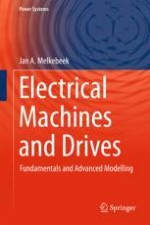2018 | OriginalPaper | Buchkapitel
28. Modelling and Dynamic Behaviour of Synchronous Machines
verfasst von : Jan A Melkebeek
Erschienen in: Electrical Machines and Drives
Aktivieren Sie unsere intelligente Suche, um passende Fachinhalte oder Patente zu finden.
Wählen Sie Textabschnitte aus um mit Künstlicher Intelligenz passenden Patente zu finden. powered by
Markieren Sie Textabschnitte, um KI-gestützt weitere passende Inhalte zu finden. powered by
